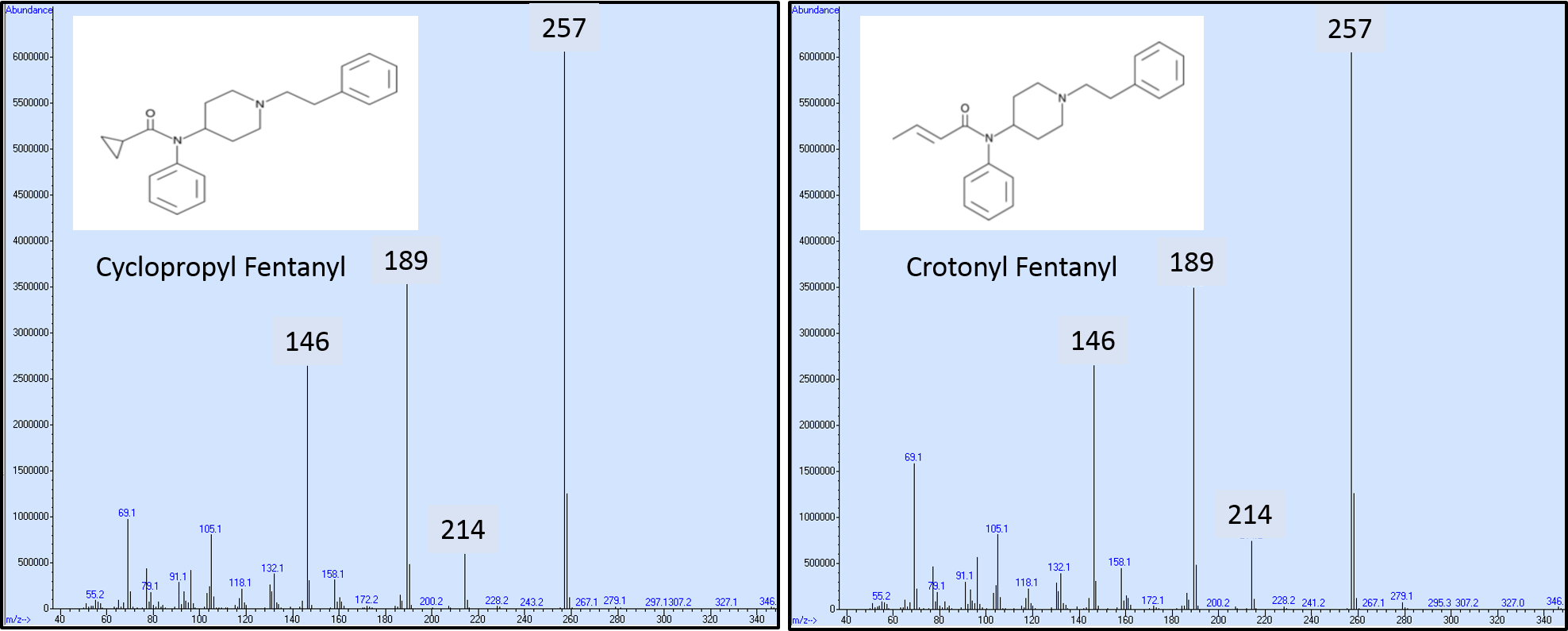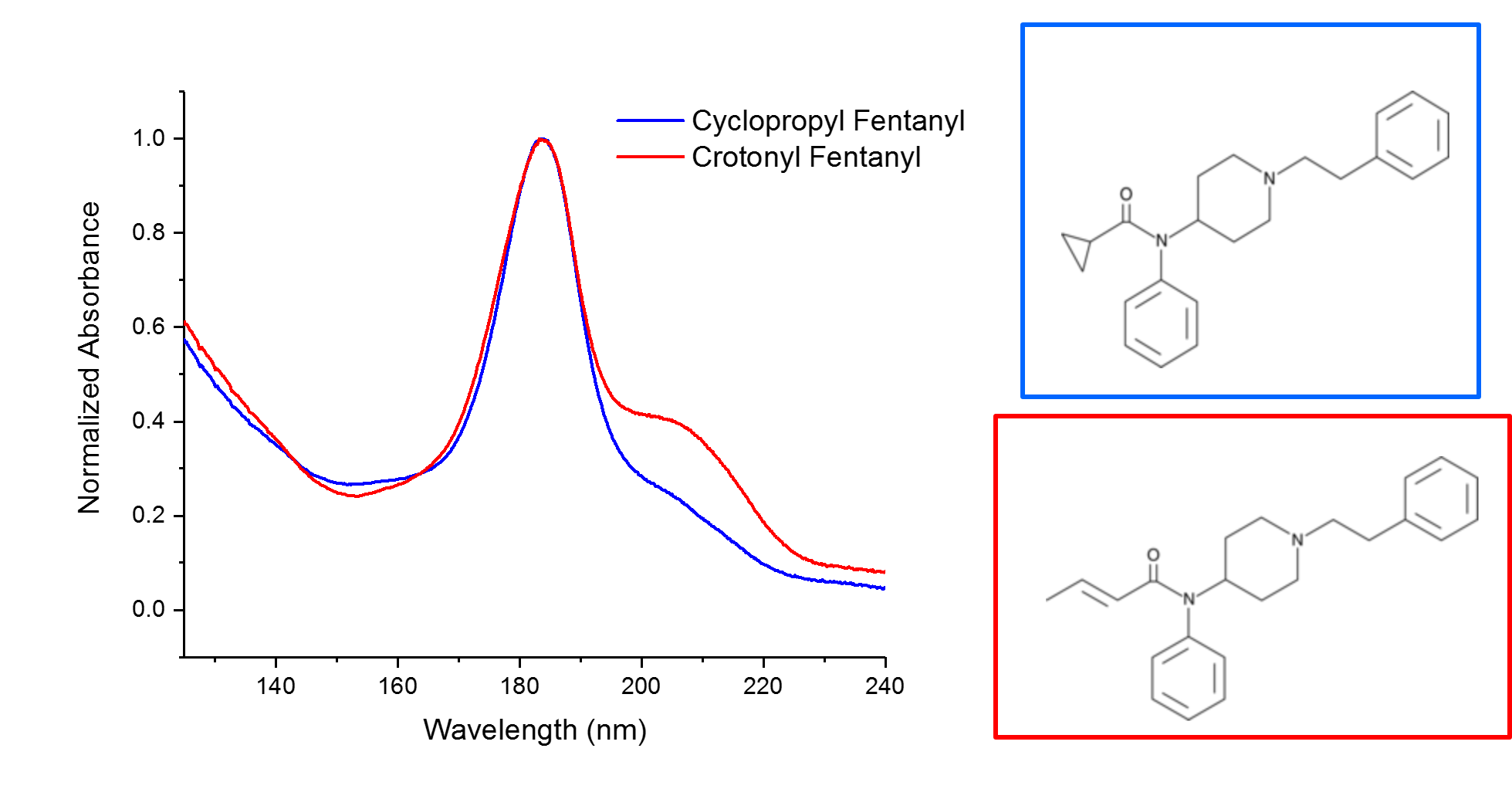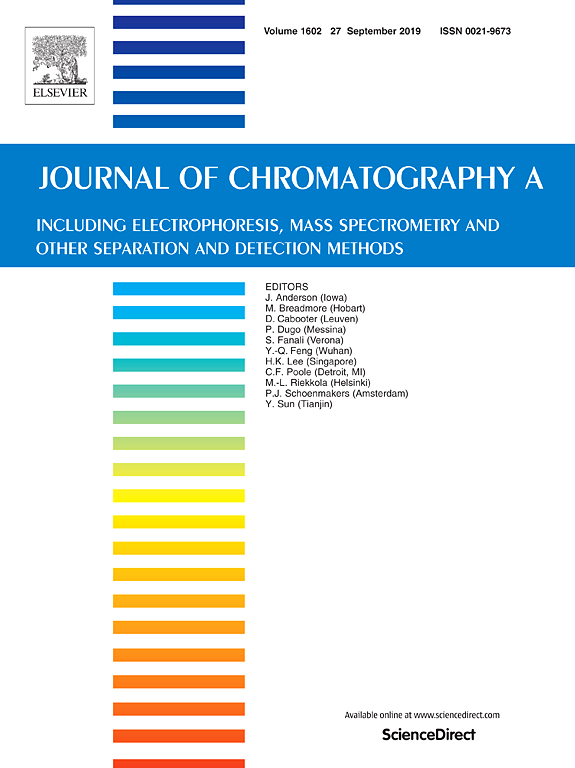Published Lindsey Shear-Laude, VUV Analytics on February 28, 2018
Fentanyl Analysis by GC-VUV
In the US it has become increasingly apparent that opioid misuse and abuse is alarmingly on the rise. To those that have suffered the loss of a loved one, this epidemic is even more painfully apparent. The severity of this crisis has recently intensified due to the introduction of highly potent, illicit synthetic opioids to the US drug market. Illicit synthetic opioids are manufactured in clandestine laboratories which operate illegally and do not adhere to regulatory or pharmaceutical standards. Increasingly, synthetic opioids are being implicated in overdose fatalities with the most common variety being fentanyl and fentanyl analogs. Fentanyl is 50 to 100 times more potent than morphine and these drugs are now commonly showing up in heroin and other illicit drugs of abuse. They are also sold illegally as counterfeit prescription pills. The main reason for this is that they can be synthesized much more cheaply than heroine or morphine and are much, much stronger. Their potency not only puts users at higher risk for overdose, but also law enforcement and other first responders through possible incidental contact.
In July 2016 the Drug Enforcement Administration (DEA) issued a nationwide report indicating that hundreds of thousands of counterfeit pills have been entering the US drug market since 2014, some containing deadly amounts of fentanyl and fentanyl analogs. These fentanyl related compounds have been reported by the DEA National Forensics Laboratory Information System (NFLIS), which systematically collects drug identification results from drug cases submitted for analysis to forensics laboratories. NFLIS has reported that the overall supply of illicitly manufactured fentanyl appears to have substantially increased from 2014 to 2015 with the number of drug submissions testing positive for illicitly manufactured fentanyl doubling during this timeframe.
A very important part of solving the national opioid epidemic lies in accurate drug identification analysis in support of law enforcement agencies and first responders. I recently spoke with a colleague at the DEA who was working on the identification of Crotonyl Fentanyl and Cyclopropyl Fentanyl. These two compounds are obviously quite different structurally. However, the electron ionization GC-MS technique used for their analysis gives essentially the same mass spectra as can be seen in Figure 1. I immediately recognized that GC-VUV would provide a solution to this problem and quickly obtained standards of each compound from Cayman Chemical to verify my hypothesis. You can see in Figure 2 that the VUV absorbance spectrum for each of these closely related compounds is distinctly different, thereby allowing conclusive identification.

Figure 1. Electron ionization mass spectra for Cyclopropyl Fentanyl and Crotonyl Fentanyl. The spectra are essentially identical, making accurate identification difficult.

Figure 2. VUV absorption spectra for Cyclopropyl Fentanyl and Crotonyl Fentanyl. The spectra are unique, allowing unambiguous identification.
We have a long way to go in addressing the opioid epidemic in America from many different perspectives. Innovative technology like GC-VUV can help.
References:









Leave a Reply